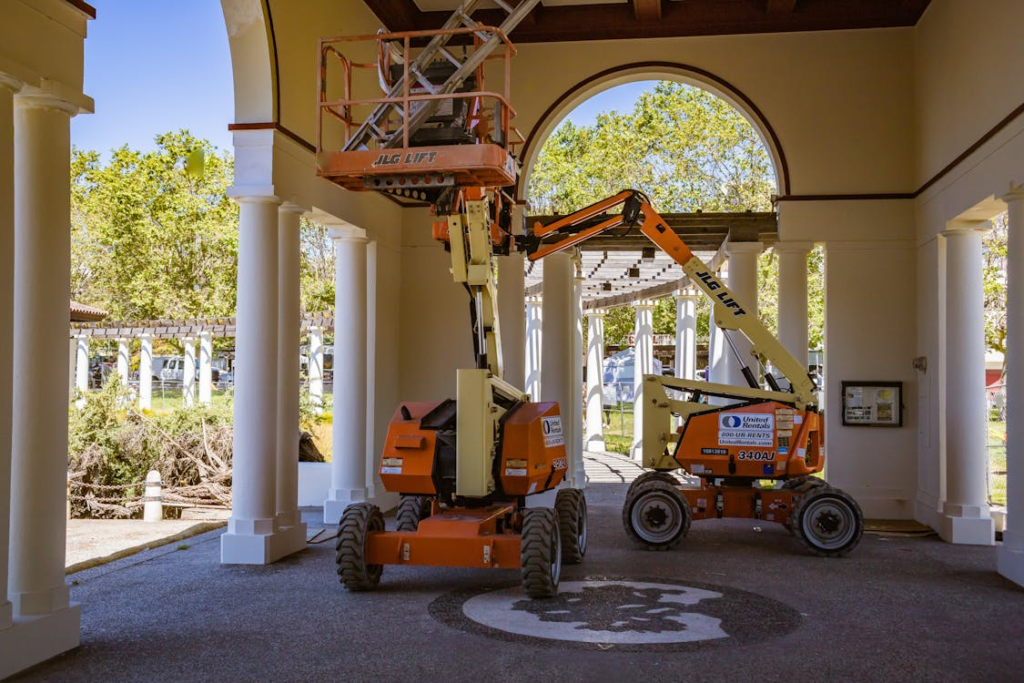
Many industries rely on scissor lifts for their versatility and efficiency. They offer a secure platform for workers to perform tasks at various heights and deliver a safe and steady working surface, ideal for operations that demand access to elevated spaces.
On the other hand, if you’re considering purchasing a scissor lift, selecting one that precisely meets your business needs is crucial. Now, suppose you’re expanding your operations to a city like Denver. In that case, there are scissor lifts available for rent in Denver, which can be a budget-friendly option that aligns with your business requirements and financial constraints.
With that said, several types of scissor lifts are available, each designed for specific applications. Below, we outline the main types of scissor lifts, their features, and typical use cases.
Electric Scissor Lifts
Electric scissor lifts are among the most common types. They are often used for indoor projects where noise and emissions are a concern. These lifts run on electric motors and rechargeable batteries, ensuring quiet and environmentally conscious performance.
Key Features:
- Compact design, ideal for navigating tight indoor spaces.
- Non-marking tires, which prevent floor damage.
- Lower maintenance requirements compared to fuel-powered alternatives.
Typical Applications:
- Indoor maintenance tasks.
- Warehouse stocking and inventory management.
- Electrical installations and repairs.
Diesel Scissor Lifts

Diesel scissor lifts are powered by internal combustion engines designed for heavy-duty outdoor tasks. These lifts can reach greater heights and handle larger loads, making them ideal for construction sites and other demanding environments.
Key Features:
- Robust design to withstand tough outdoor conditions.
- Larger platform sizes to accommodate multiple workers and tools.
- High-weight capacities for heavy-duty applications.
Typical Applications:
- Construction and infrastructure projects.
- Outdoor maintenance and repairs.
- Bridge and overpass inspections.
Pneumatic Scissor Lifts
Pneumatic scissor lifts use compressed air to power their lifting mechanism, eliminating the need for fuel or electricity. These lifts are eco-friendly and suitable for applications where emissions and power availability are concerns.
Key Features:
- Operates without hydraulic fluids, reducing environmental risks.
- Lightweight and portable for easy transportation.
- Quiet operation, ideal for sensitive environments.
Typical Applications:
- Cleanroom and laboratory maintenance.
- Environmentally sensitive projects.
- Temporary setups where power sources are unavailable.
Rough Terrain Scissor Lifts
As the name suggests, rough-terrain scissor lifts are built to operate on uneven or rugged surfaces. They have specialized tires and stabilizing features to ensure safety and stability, even on challenging terrain.
Key Features:
- Four-wheel drive for improved mobility on uneven ground.
- Outriggers or leveling systems for added stability.
- Larger ground clearance to navigate obstacles.
Typical Applications:
- Construction sites with unpaved surfaces.
- Landscaping and agricultural tasks.
- Outdoor events and staging setups.
Hydraulic Scissor Lifts
Hydraulic scissor lifts use hydraulic systems to raise and lower the platform. These reliable and straightforward lifts make them a popular choice for various industries. They are available in electric and fuel-powered variants, allowing flexibility based on specific needs.
Key Features:
- Simple and durable design with minimal moving parts.
- Smooth operation for precise height adjustments.
- Wide range of lifting capacities and platform sizes.
Typical Applications:
- General maintenance tasks.
- Warehouse loading and unloading.
- Equipment installation in factories.
In Summary
These lifts are essential tools across numerous industries, providing secure and effective access to high areas. To choose the ideal scissor lift, evaluate key task requirements such as operating conditions, load limits, and height needs.
Whether it’s an electric lift for quiet indoor operations or a rough terrain lift for challenging outdoor conditions, there’s a scissor lift designed to meet every need. Understanding the features and applications of each type can help businesses maximize productivity and safety on the job.
- 0shares
- Facebook0
- Pinterest0
- Twitter0



